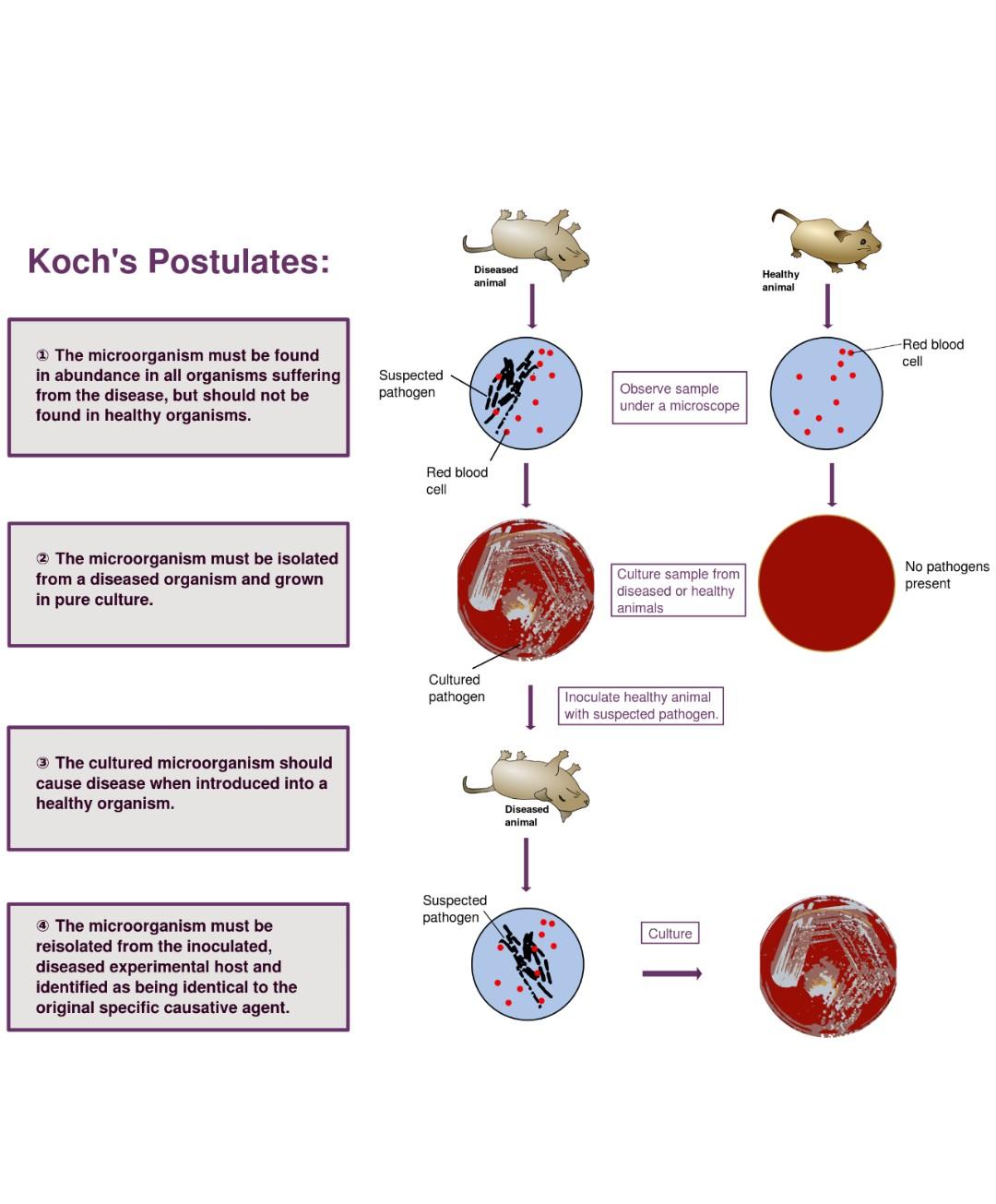Time management is very much important in IIT JAM. The eduncle test series for IIT JAM Mathematical Statistics helped me a lot in this portion. I am very thankful to the test series I bought from eduncle.
Nilanjan Bhowmick AIR 3, CSIR NET (Earth Science)Bishal Paul posted an Question
- CSIR NET
- Life Sciences
What are modern koch postulates which was suggested by fredricks and relman? explain
What are modern koch postulates which was suggested by Fredricks and Relman? Explain
- 1 Likes
- 4 Comments
- 0 Shares
-
Dr. kirti
![best-answer]()
Here are Koch’s postulates for the 21st century as suggested by Fredricks and Relman: 1.A nucleic acid sequence belonging to a putative pathogen should be present in most cases of an infectious disease. Microbial nucleic acids should be found preferentially in those organs or gross anatomic sites known to be diseased, and not in those organs that lack pathology. 2.Fewer, or no, copy numbers of pathogen-associated nucleic acid sequences should occur in hosts or tissues without disease. 3.With resolution of disease, the copy number of pathogen-associated nucleic acid sequences should decrease or become undetectable. With clinical relapse, the opposite should occur. 4.When sequence detection predates disease, or sequence copy number correlates with severity of disease or pathology, the sequence-disease association is more likely to be a causal relationship. 5.The nature of the microorganism inferred from the available sequence should be consistent with the known biological characteristics of that group of organisms. 6.Tissue-sequence correlates should be sought at the cellular level: efforts should be made to demonstrate specific in situ hybridization of microbial sequence to areas of tissue pathology and to visible microorganisms or to areas where microorganisms are presumed to be located. 7.These sequence-based forms of evidence for microbial causation should be reproducible.
-
Bishal paul
copy pasted from wikipedia🤣
-
Priya sarda
Robert Koch's postulates, published in 1890, are a set of criteria that establish whether a particular organism is the cause of a particular disease. Today, Koch's postulates are taught in school and college as a demonstration of the rigor and legitimacy of clinical microbiology. Koch's postulates are the following: The microorganism must be found in abundance in all organisms suffering from the disease, but should not be found in healthy organisms. The microorganism must be isolated from a diseased organism and grown in pure culture. The cultured microorganism should cause disease when introduced into a healthy organism. The microorganism must be reisolated from the inoculated, diseased experimental host and identified as being identical to the original specific causative agent. Here are Koch’s postulates for the 21st century as suggested by Fredricks and Relman: A nucleic acid sequence belonging to a putative pathogen should be present in most cases of an infectious disease. Microbial nucleic acids should be found preferentially in those organs or gross anatomic sites known to be diseased, and not in those organs that lack pathology. Fewer, or no, copy numbers of pathogen-associated nucleic acid sequences should occur in hosts or tissues without disease. With resolution of disease, the copy number of pathogen-associated nucleic acid sequences should decrease or become undetectable. With clinical relapse, the opposite should occur. When sequence detection predates disease, or sequence copy number correlates with severity of disease or pathology, the sequence-disease association is more likely to be a causal relationship. The nature of the microorganism inferred from the available sequence should be consistent with the known biological characteristics of that group of organisms. Tissue-sequence correlates should be sought at the cellular level: efforts should be made to demonstrate specific in situ hybridization of microbial sequence to areas of tissue pathology and to visible microorganisms or to areas where microorganisms are presumed to be located. These sequence-based forms of evidence for microbial causation should be reproducible.
![cropped3272821153676539.jpg]()
Do You Want Better RANK in Your Exam?
Start Your Preparations with Eduncle’s FREE Study Material
- Updated Syllabus, Paper Pattern & Full Exam Details
- Sample Theory of Most Important Topic
- Model Test Paper with Detailed Solutions
- Last 5 Years Question Papers & Answers
Sign Up to Download FREE Study Material Worth Rs. 500/-



















Dr. kirti
In simple words, NA seq should be present especially in the infected region. But one can also detect in uninfected region as well... in simple words when we perform widal test for typhoid.. we used to check upto which dilution we are able to detect the bacteria... only after certain ratio like more than 1:80, we can say typhoid positive otherwise negative. Also more the number of sequence detection.. more will be the severity